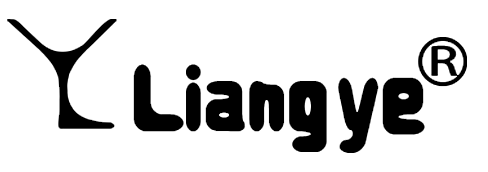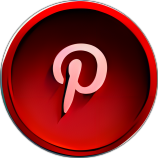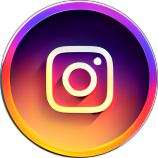The Versatility of Fabric LED Screens: A Comprehensive Guide
Release time:
2025-08-06
The Versatility of Fabric LED Screens: A Comprehensive Guide Table of Contents 1. Introduction to Fabric LED Screens 2. Advantages of Fabric LED Screens 3. Applications of Fabric LED Screens 3.1 Fabric LED Screens in Events 3.2 Advertising and Marketing Uses 3.3 Architectural Integrations 3.4 Theater and Performance Applications
The Versatility of Fabric LED Screens: A Comprehensive Guide
Table of Contents
- 1. Introduction to Fabric LED Screens
- 2. Advantages of Fabric LED Screens
- 3. Applications of Fabric LED Screens
- 3.1 Fabric LED Screens in Events
- 3.2 Advertising and Marketing Uses
- 3.3 Architectural Integrations
- 3.4 Theater and Performance Applications
- 4. Technical Specifications of Fabric LED Screens
- 5. Installation and Maintenance Tips
- 6. Comparison with Traditional LED Screens
- 7. Future Trends in Fabric LED Technology
- 8. FAQs About Fabric LED Screens
- 9. Conclusion
1. Introduction to Fabric LED Screens
In the ever-evolving world of digital displays, fabric LED screens have emerged as a remarkable innovation, combining **flexibility**, **lightweight design**, and **high-quality visuals**. These screens offer a unique solution for various applications, making them a popular choice in events, advertising, and architectural designs.
Fabric LED screens consist of lightweight fabric materials embedded with LED technology, allowing for vibrant displays that can be easily transported and set up. Their versatility means they can be tailored to fit various shapes and sizes, offering an array of creative possibilities that traditional rigid LED screens cannot provide.
This comprehensive guide delves into the many aspects of fabric LED screens, exploring their advantages, applications, technical specifications, and future trends, making it an invaluable resource for anyone considering this technology.
2. Advantages of Fabric LED Screens
Fabric LED screens come with a multitude of **benefits** that set them apart from their traditional counterparts. Here are some key advantages:
2.1 Lightweight and Portable
One of the most notable features of fabric LED screens is their **lightweight design**. They can be easily transported, making them ideal for events and shows where mobility is crucial. This portability is a significant advantage for event planners and marketers who frequently set up and dismantle displays.
2.2 Easy Installation
Fabric LED screens are relatively simple to install. Unlike traditional screens, they can be easily hung or draped, reducing setup times significantly. This ease of installation is beneficial for temporary displays at trade shows, concerts, and exhibitions.
2.3 Customization and Flexibility
Fabric LED screens can be customized to fit virtually any space or shape. This flexibility allows for unique designs that can enhance the overall aesthetic of an event or venue. Whether you require a large backdrop or a creatively shaped screen, fabric LEDs can accommodate your needs.
2.4 High-Quality Visuals
Despite their lightweight nature, fabric LED screens deliver **excellent image quality**. They are capable of producing vibrant colors and sharp images, ensuring that the content displayed is visually striking. This quality is essential for capturing audience attention and conveying messages effectively.
2.5 Safe and Eco-Friendly
Fabric LED screens are often considered safer than traditional glass LED screens, as they are less prone to shattering. Additionally, many fabric screens are made from environmentally friendly materials, promoting sustainability in the events and advertising industries.
3. Applications of Fabric LED Screens
Fabric LED screens are incredibly versatile, finding applications across various sectors. Below, we explore some of the most prevalent uses.
3.1 Fabric LED Screens in Events
In the events industry, fabric LED screens play a pivotal role. They serve as backdrops for concerts, exhibitions, and corporate events, providing dynamic visuals that enhance the overall experience. Their adaptability allows for quick changes to visuals, making them perfect for live events where content can be modified on the fly.
3.2 Advertising and Marketing Uses
Advertising agencies have embraced fabric LED screens for their ability to capture attention. From billboards to in-store displays, these screens offer a modern approach to advertising that stands out. Their vibrant visuals can be tailored to specific campaigns, making them effective tools for brand promotion.
3.3 Architectural Integrations
Fabric LED screens are increasingly utilized in architectural designs, adding a modern touch to buildings. They can be integrated into facades, lobbies, and public spaces, creating visually appealing environments that engage visitors. Architects value the flexibility of fabric screens, allowing for creative designs that enhance the structure's aesthetic.
3.4 Theater and Performance Applications
In the performing arts, fabric LED screens are used to create immersive experiences. They can serve as backdrops that change in real-time, complementing live performances and allowing for innovative stage designs. The ease of installation and versatility of these screens make them ideal for theaters and live shows.
4. Technical Specifications of Fabric LED Screens
Understanding the technical specifications of fabric LED screens is essential for those looking to invest in this technology. Key specifications include:
4.1 Pixel Pitch
Pixel pitch refers to the distance between the center of one LED pixel to the center of an adjacent pixel. A smaller pixel pitch results in higher resolution and better image quality, making it crucial to consider for displays intended for close viewing.
4.2 Brightness
Brightness is measured in nits, indicating how luminous the screen is. For outdoor applications, a higher brightness level is necessary to ensure visibility in sunlight, while indoor screens can operate effectively with lower brightness.
4.4 Resolution
The resolution of a fabric LED screen, typically expressed in pixels (width x height), determines the clarity of the images. Higher resolutions provide sharper and more detailed images, which is especially important for advertising and high-impact displays.
5. Installation and Maintenance Tips
When it comes to installation and maintenance, there are several tips to ensure that fabric LED screens operate effectively and maintain their quality over time.
5.1 Proper Setup
Ensure that the installation site is suitable for the specific type of fabric LED screen being used. Pay attention to weight limits, environmental factors, and visibility to maximize the screen's impact.
5.2 Regular Cleaning
To maintain the quality of images, regular cleaning is essential. Use soft, lint-free cloths and appropriate cleaning solutions to avoid damage to the screen's surface.
5.3 Updates and Software Maintenance
Keep the software updated to ensure optimal performance. Regular updates can improve functionality and provide new features that enhance the user experience.
6. Comparison with Traditional LED Screens
When evaluating fabric LED screens against traditional LED screens, several factors come into play:
6.1 Weight and Portability
Fabric LED screens are significantly lighter and easier to transport than traditional LED screens, making them more practical for temporary setups.
6.2 Flexibility in Design
Fabric screens offer unmatched flexibility in terms of design and customization, allowing for creative shapes and sizes that rigid screens simply cannot match.
6.3 Cost-Effectiveness
While fabric LED screens can be more affordable in terms of initial investment, they may also offer savings on transportation and installation costs due to their lightweight nature.
7. Future Trends in Fabric LED Technology
The future of fabric LED technology looks promising, with advancements on the horizon that will further enhance their capabilities. Here are a few trends to watch:
7.1 Integration with Smart Technology
As smart technology continues to evolve, fabric LED screens are expected to integrate with IoT devices, allowing for real-time data visualization and interactivity.
7.2 Enhanced Resolution
With ongoing advancements in LED technology, we can anticipate even higher resolutions and better image quality from fabric screens in the near future.
7.3 Sustainable Materials
The trend towards sustainability will likely lead to the development of fabric LED screens made from eco-friendly materials, appealing to environmentally-conscious consumers and businesses.
8. FAQs About Fabric LED Screens
8.1 What is a fabric LED screen?
A fabric LED screen is a lightweight display made from fabric material embedded with LEDs, known for its flexibility and high-quality visuals.
8.2 How do I install a fabric LED screen?
Installation typically involves hanging or draping the screen, which is much easier than traditional LED displays. Ensure the setup site is secure and follows weight limits.
8.3 Can fabric LED screens be used outdoors?
Yes, fabric LED screens can be designed for outdoor use, with higher brightness levels and weather-resistant materials.
8.4 How do I clean a fabric LED screen?
Use a soft, lint-free cloth with a gentle cleaning solution to wipe the screen. Avoid abrasive materials to prevent damage.
8.5 What are the common applications of fabric LED screens?
Common applications include events, advertising, architectural designs, and theater performances.
9. Conclusion
Fabric LED screens represent a significant leap forward in display technology, providing versatility, portability, and high-quality visuals for various applications. Their ability to adapt to diverse environments makes them invaluable for event planning, advertising, and modern architecture. As the technology continues to evolve, we can expect even greater advancements that will redefine the possibilities of fabric LED screens. Embracing this innovative technology can elevate any project, ensuring it captures attention and engages audiences effectively.
Key words:
Fabric LED screen
Previous article
Recommend reading
25-08-06 12:40:11
25-08-05 17:00:00
25-08-04 11:20:17









